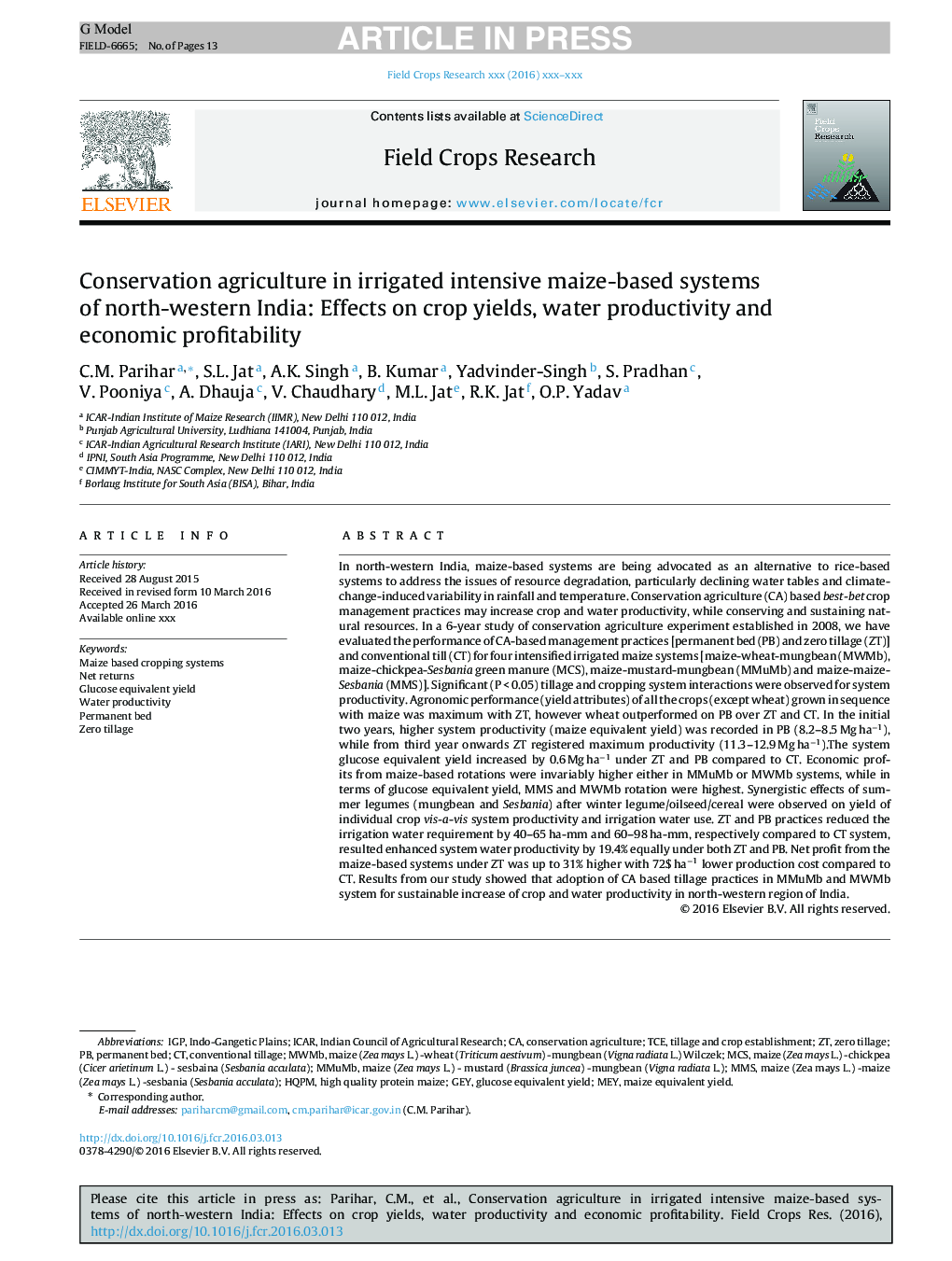| Article ID | Journal | Published Year | Pages | File Type |
|---|---|---|---|---|
| 6374451 | Field Crops Research | 2016 | 13 Pages |
Abstract
In north-western India, maize-based systems are being advocated as an alternative to rice-based systems to address the issues of resource degradation, particularly declining water tables and climate-change-induced variability in rainfall and temperature. Conservation agriculture (CA) based best-bet crop management practices may increase crop and water productivity, while conserving and sustaining natural resources. In a 6-year study of conservation agriculture experiment established in 2008, we have evaluated the performance of CA-based management practices [permanent bed (PB) and zero tillage (ZT)] and conventional till (CT) for four intensified irrigated maize systems [maize-wheat-mungbean (MWMb), maize-chickpea-Sesbania green manure (MCS), maize-mustard-mungbean (MMuMb) and maize-maize-Sesbania (MMS)]. Significant (P < 0.05) tillage and cropping system interactions were observed for system productivity. Agronomic performance (yield attributes) of all the crops (except wheat) grown in sequence with maize was maximum with ZT, however wheat outperformed on PB over ZT and CT. In the initial two years, higher system productivity (maize equivalent yield) was recorded in PB (8.2-8.5 Mg haâ1), while from third year onwards ZT registered maximum productivity (11.3-12.9 Mg haâ1).The system glucose equivalent yield increased by 0.6 Mg haâ1 under ZT and PB compared to CT. Economic profits from maize-based rotations were invariably higher either in MMuMb or MWMb systems, while in terms of glucose equivalent yield, MMS and MWMb rotation were highest. Synergistic effects of summer legumes (mungbean and Sesbania) after winter legume/oilseed/cereal were observed on yield of individual crop vis-a-vis system productivity and irrigation water use. ZT and PB practices reduced the irrigation water requirement by 40-65 ha-mm and 60-98 ha-mm, respectively compared to CT system, resulted enhanced system water productivity by 19.4% equally under both ZT and PB. Net profit from the maize-based systems under ZT was up to 31% higher with 72$ haâ1 lower production cost compared to CT. Results from our study showed that adoption of CA based tillage practices in MMuMb and MWMb system for sustainable increase of crop and water productivity in north-western region of India.
Keywords
Related Topics
Life Sciences
Agricultural and Biological Sciences
Agronomy and Crop Science
Authors
C.M. Parihar, S.L. Jat, A.K. Singh, B. Kumar, Yadvinder-Singh Yadvinder-Singh, S. Pradhan, V. Pooniya, A. Dhauja, V. Chaudhary, M.L. Jat, R.K. Jat, O.P. Yadav,
